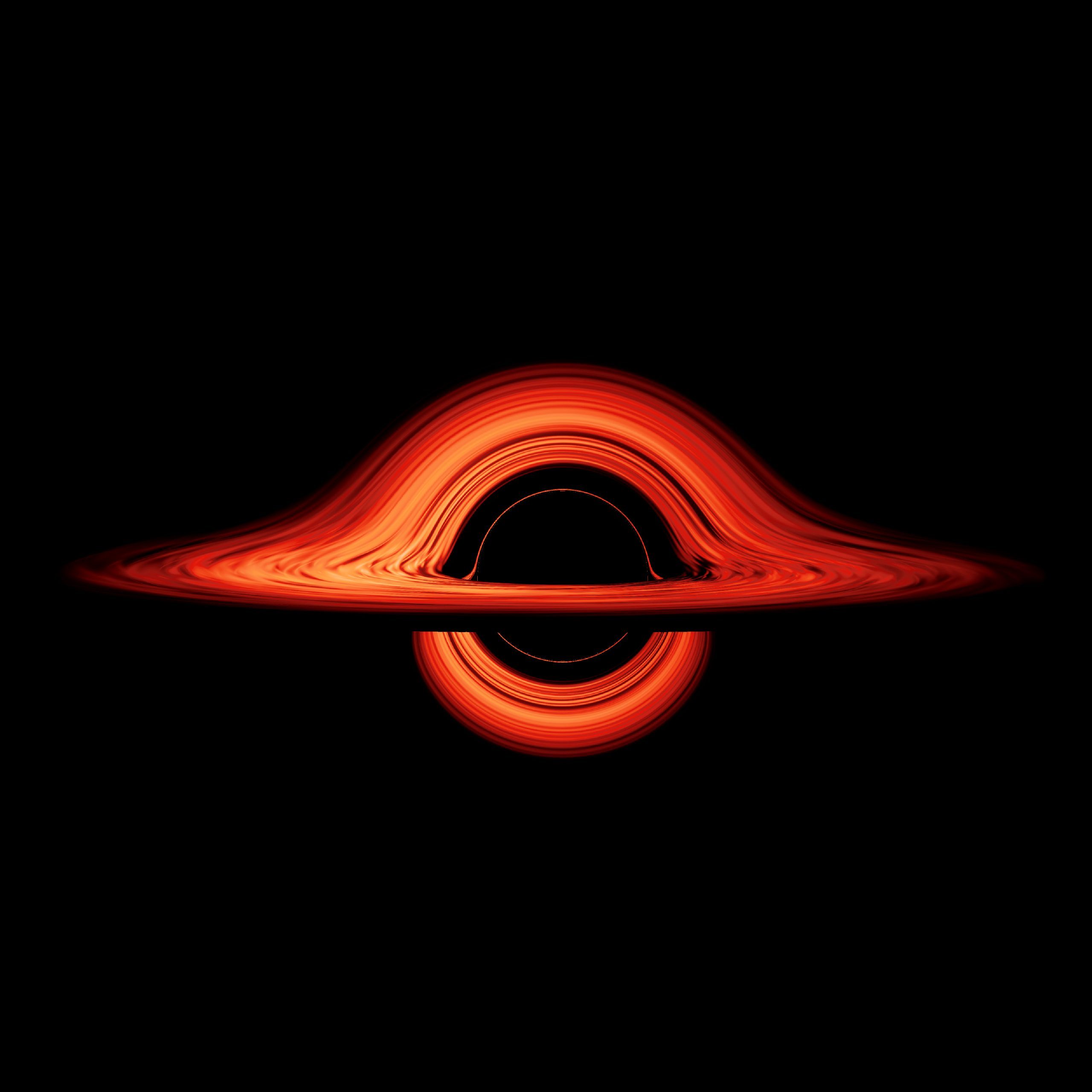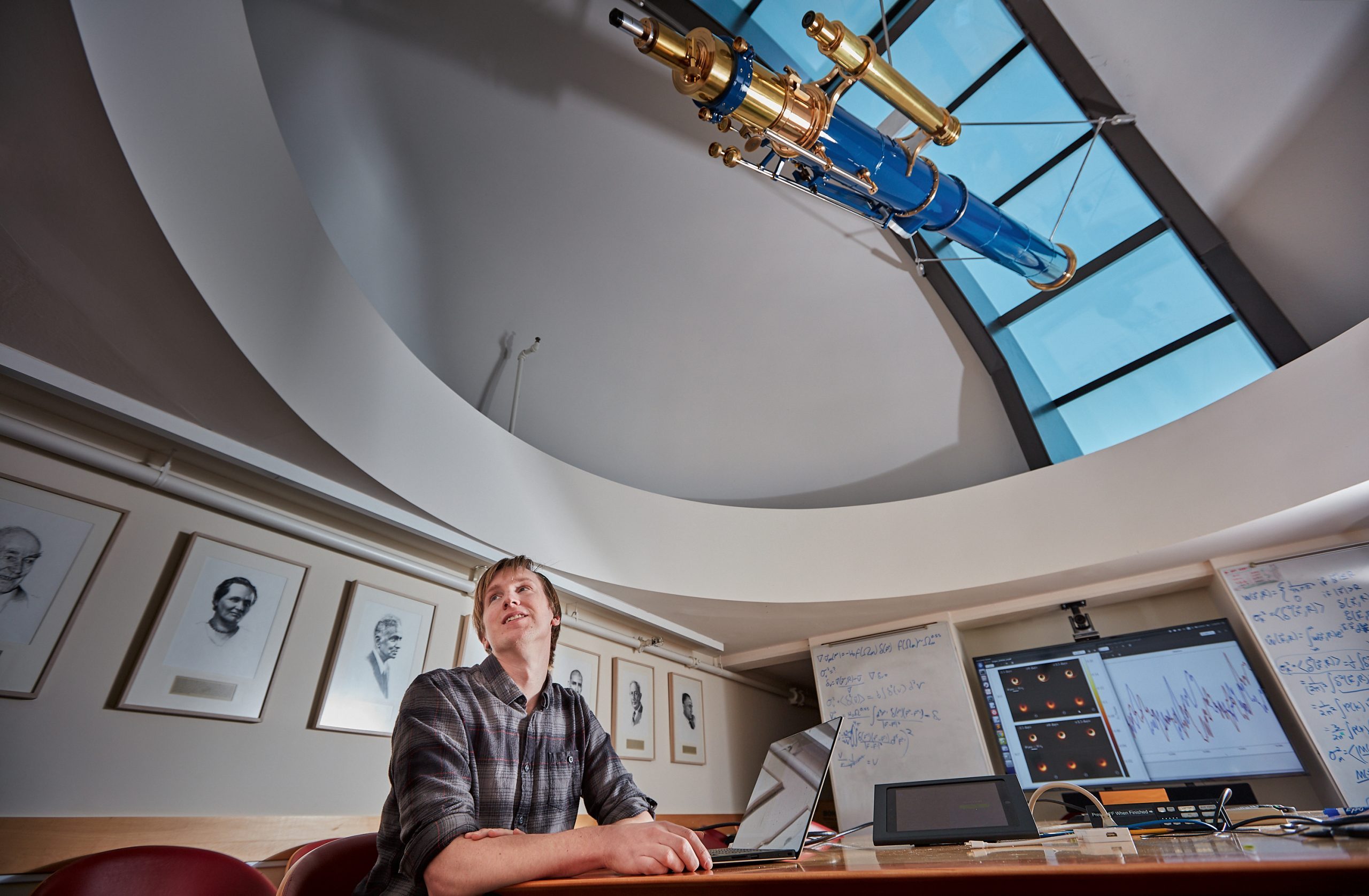The first-ever image of a black hole lit up news shows and internet feeds in 2019. Andrew Chael ’13 helped create the historic picture.

Andrew Chael ’13 has always been an astrophysicist at heart.
Growing up in Albuquerque, Chael loved the dinosaur bones at the New Mexico Museum of Natural History and Science as much as the next kid, but he found the space exhibits even more interesting. He majored in physics at Carleton, where he completedastrophysics research with Professor Joel Weisberg. At the end of his first year in a physics PhD program at Harvard, he joined the Event Horizon Telescope Collaboration, which was trying to take the first-ever photograph of a black hole. “I was the first graduate student hired on the project at Harvard,” Chael says. “In the first meeting, the director was talking about having an image of a black hole within five years. I was a little skeptical that it would work out.”
Little did Chael know then that the project would propel him into astrophysics stardom as a key contributor to one of 2019’s biggest apolitical stories.

Although scientists had been producing visual models of what they believed black holes should look like, no one had been able to capture an actual image of one. By doing just that, team members opened up new possibilities for exploring black holes in greater detail and potentially gaining new insights into the physics of gravity.
“Black holes are defined by their darkness, by the fact that light cannot escape them,” explains Chael. They are always pulling matter into themselves, and as gas or plasma falls toward the event horizon — the point past which no light can escape — it can release up to 50 times more energy than nuclear fusion.
The Harvard team wanted to create an image of a supermassive black hole at the heart of nearby galaxy Messier 87 (M87). The dense elliptical galaxy has approximately 60 times as many star clusters as the Milky Way and is so easy to see that its namesake, French astronomer Charles Messier, discovered it with a four-inch refracting telescope in 1781. M87’s black hole is another matter. If scientists tried to observe the energy around it using the Hubble Space Telescope — the most powerful magnifying tool in existence — the information would fill only one two-thousandths of a pixel.
“It would be like looking for an orange on the surface of the moon,” Chael says. Viewing M87’s black hole would require a telescope roughly the size of Earth. “And since the National Science Foundation will not let us build one of those,” Chael says with a laugh, “we needed a new solution.”
In June 2018 four teams of scientists from around the world created the Event Horizon Telescope (EHT), which virtually connects eight telescopes in the United States, Mexico, Chile, Greenland, Spain, France, and the South Pole. They collected massive amounts of observation data from each telescope (3 petabytes — or 3 million gigabytes — over a five-day period) and shipped it on hard drives to a central facility where a supercomputer crunched the data.
Each telescope produces something akin to a single piece in a puzzle by showing the black hole from one viewing angle. If a telescope that could view M87 from every angle on Earth existed, it could have captured a complete picture, but EHT could provide only a handful of angles and puzzle pieces. The scientists would need to use a mathematical algorithm to fill in the missing pieces.
Two teams of imaging scientists employed a classic technique called CLEAN that astronomers have been using for about 50 years to render images from radio telescope data. CLEAN is standard in the field, but it must be executed manually, making it clunky to use with complex data.
Two other teams — one of which included Chael and his Harvard colleagues — piloted a new system that would save time and prevent human error by automatically running the data through different combinations without requiring scientists to input each one.
The four teams conducted a blind test and didn’t communicate with one another about their work for the seven weeks they spent processing the data. If they all came up with a similar image, independently, they would know that their approach, including the new imaging system Chael’s team was testing, was working.
When the moment came to compare results, Chael sat nervously in a Harvard conference room as each team’s image appeared on the screen. All four showed a doughnut-shaped halo with similar details, like a small spike in the lower left quarter of the aura. “It was probably the happiest day of my graduate school career,” says Chael.

Because the automated system prototype had performed so well in the blind test, Chael and his team decided to incorporate it into a new software package they dubbed ehtim (EHT Imaging) that would not only visually render the data, but also neutralize noise (distortions in the telescope data caused by interference from Earth’s atmosphere) and produce a high-resolution image with finer details than the prototype images. Meanwhile, developers on another team used the prototype in a different way to create an alternate software package called Smili. By working separately, the two teams could incorporate different ideas into their approaches and produce the most accurate possible image.
After months of intensive work, the ehtim, Smili, and CLEAN groups compared their results, which were remarkably similar. “Some of the finer details were different in the two high- resolution models,” says Chael, “but, overall, the structure of the images was very consistent.”
The scientists averaged the high-resolution results to create a composite image that smoothed out any discrepancies among the models. “The image we released was the most conservative image we could produce,” says Chael. “It’s probably the most vetted image in the history of radio interferometry.”
The picture swept through the media in April 2019 and captured the public’s imagination. A variety of team members gave presentations on their findings around the world. Six of them, including Chael, appeared at the Github Satellite conference in Berlin. Chael also delivered a lecture at Carleton in May, just after successfully defending his dissertation on ehtim.
Chael headed to Princeton last fall to begin postdoctoral research. He hopes to take black hole imaging to the next level by observing Sagittarius A*, a supermassive black hole in our own galaxy that is moving and morphing much more quickly than M87’s black hole. “It’s exciting, because we’ll be able to see things happening over a shorter period of time,” he says. “I can’t wait to see where the data take us.”

